Zi Shen Decoction Inhibits Growth and Metastasis of Lung Cancer via Regulating the AKT/GSK-3 β/ β-Catenin Pathway
- PMID: 33777320
- PMCID: PMC7969097
- DOI: 10.1155/2021/6685282
Zi Shen Decoction Inhibits Growth and Metastasis of Lung Cancer via Regulating the AKT/GSK-3 β/ β-Catenin Pathway
Abstract
Lung cancer has become the leading cause of cancer-related death worldwide. Oxidative stress plays important roles in the pathogenesis of lung cancer. Many natural products show antioxidative activities in cancer treatment. Zi Shen decoction (ZSD) is a classic prescription for the treatment of lung disease. However, its effect on lung cancer lacks evidence-based efficacy. In this study, we investigated the anticancer effects of ZSD on lung cancer in vivo and in vitro. Our results showed that oral administration of ZSD suppressed the Lewis lung cancer (LLC) growth in a subcutaneous allograft model and promoted necrosis and inflammatory cell infiltration in the tumor tissues. Furthermore, ZSD not only inhibited tumor cell proliferation and migration but also induced cell apoptosis in lung cancer cells. PI3K/AKT signaling is well characterized in response to oxidative stress. The bioinformatics analysis and western blot assays suggested that ZSD decreased the enzyme activity of PI3K and AKT in vivo and in vitro. We also found that the AKT/GSK-3β/β-catenin pathway medicated anticancer effect of ZSD in lung cancer cells. In conclusion, we demonstrate for the first time that ZSD possesses antitumor properties, highlighting its potential use as an alternative strategy or adjuvant treatment for lung cancer therapy.
Copyright © 2021 Yanxia Ma et al.
Conflict of interest statement
All the authors have read and approved the final manuscript, and there is no known competing interest.
Figures
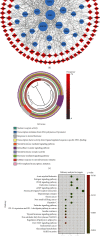
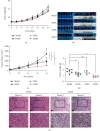
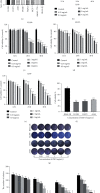
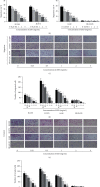
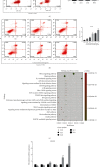

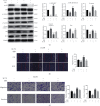
Similar articles
-
Isobavachalcone isolated from Psoralea corylifolia inhibits cell proliferation and induces apoptosis via inhibiting the AKT/GSK-3β/β-catenin pathway in colorectal cancer cells.Drug Des Devel Ther. 2019 May 1;13:1449-1460. doi: 10.2147/DDDT.S192681. eCollection 2019. Drug Des Devel Ther. 2019. PMID: 31118579 Free PMC article.
-
Growth differentiation factor 15 induces growth and metastasis of human liver cancer stem-like cells via AKT/GSK-3β/β-catenin signaling.Oncotarget. 2017 Mar 7;8(10):16972-16987. doi: 10.18632/oncotarget.15216. Oncotarget. 2017. PMID: 28199981 Free PMC article.
-
Astragaloside IV Inhibits the Progression of Non-Small Cell Lung Cancer Through the Akt/GSK-3β/β-Catenin Pathway.Oncol Res. 2019 Mar 29;27(4):503-508. doi: 10.3727/096504018X15344989701565. Epub 2018 Aug 21. Oncol Res. 2019. PMID: 30131090 Free PMC article.
-
Brain-derived Neurotrophic Factor Promotes Growth of Neurons and Neural Stem Cells Possibly by Triggering the Phosphoinositide 3-Kinase/ AKT/Glycogen Synthase Kinase-3β/β-catenin Pathway.CNS Neurol Disord Drug Targets. 2017;16(7):828-836. doi: 10.2174/1871527316666170518170422. CNS Neurol Disord Drug Targets. 2017. PMID: 28524001
-
Extracellular 5'-nucleotidase (CD73) promotes human breast cancer cells growth through AKT/GSK-3β/β-catenin/cyclinD1 signaling pathway.Int J Cancer. 2018 Mar 1;142(5):959-967. doi: 10.1002/ijc.31112. Epub 2017 Oct 31. Int J Cancer. 2018. PMID: 29047106
Cited by
-
Promising Advances in LINC01116 Related to Cancer.Front Cell Dev Biol. 2021 Oct 14;9:736927. doi: 10.3389/fcell.2021.736927. eCollection 2021. Front Cell Dev Biol. 2021. PMID: 34722518 Free PMC article. Review.
-
3D-QSAR and Molecular Dynamics Study of Isoxazole Derivatives to Identify the Structural Requirements for Farnesoid X Receptor (FXR) Agonists.Molecules. 2024 Mar 8;29(6):1210. doi: 10.3390/molecules29061210. Molecules. 2024. PMID: 38542850 Free PMC article.
-
Involvement of redox signalling in tumour cell dormancy and metastasis.Cancer Metastasis Rev. 2023 Mar;42(1):49-85. doi: 10.1007/s10555-022-10077-9. Epub 2023 Jan 26. Cancer Metastasis Rev. 2023. PMID: 36701089 Free PMC article. Review.
-
Baoyuan Jiedu decoction alleviating cancer cachexia-Induced muscle atrophy by regulating muscle mitochondrial function in Apc Min/+ mice.Front Pharmacol. 2022 Aug 19;13:914597. doi: 10.3389/fphar.2022.914597. eCollection 2022. Front Pharmacol. 2022. PMID: 36060011 Free PMC article.
-
In Silico and In Vitro Studies on the Mechanisms of Chinese Medicine Formula (Yiqi Jianpi Jiedu Formula) in the Treatment of Hepatocellular Carcinoma.Comput Math Methods Med. 2022 Oct 29;2022:8669993. doi: 10.1155/2022/8669993. eCollection 2022. Comput Math Methods Med. 2022. PMID: 36345477 Free PMC article.
References
MeSH terms
Substances
LinkOut - more resources
Full Text Sources
Other Literature Sources
Medical

